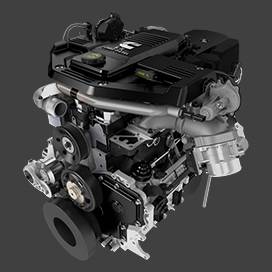Dec . 11, 2024 09:52 Back to list
brake drum assembly diagram
Understanding Brake Drum Assembly A Detailed Overview
The brake drum assembly is a critical component of a vehicle’s braking system, particularly in drum brake configurations. It plays a pivotal role in slowing down or stopping the vehicle by converting kinetic energy into thermal energy through friction. This article delves into the components, functions, and maintenance of brake drum assemblies, offering a comprehensive look at how they operate and why they matter.
Components of Brake Drum Assembly
The brake drum assembly typically comprises several key components the brake drum, brake shoes, wheel cylinder, return springs, adjuster, and various hardware pieces.
1. Brake Drum This is a cylindrical metal component that rotates with the wheel. When the brake is applied, friction is created between the brake shoes and the interior surface of the drum.
2. Brake Shoes These are curved components lined with friction material. When the brake is engaged, the wheel cylinder pushes the shoes outward against the drum, creating the friction needed to slow the vehicle.
3. Wheel Cylinder This hydraulic component converts the brake fluid pressure into mechanical force. It consists of two pistons that move the brake shoes apart when the brakes are applied.
4. Return Springs Once the brake pedal is released, these springs pull the brake shoes back into their original position, allowing the wheel to rotate freely.
5. Adjuster The adjuster maintains the correct spacing between the brake shoes and the drum, compensating for wear over time.
Functionality of Brake Drum Assembly
When a driver applies the brake pedal, hydraulic fluid flows through the brake lines into the wheel cylinder, pushing its pistons outward. The movement of the pistons forces the brake shoes against the inner surface of the brake drum. This contact generates friction, causing the drum to slow down. The efficiency of this process depends largely on the condition of both the shoes and the drum, as wear and tear can significantly affect braking performance.
brake drum assembly diagram

Once the needed deceleration is achieved, and the brake pedal is released, the hydraulic pressure decreases, allowing the return springs to pull the brake shoes back into position. Proper functioning of this system is crucial for vehicle safety, as any malfunction can lead to reduced braking efficiency or complete brake failure.
Maintenance Tips
To ensure optimal performance, regular maintenance of the brake drum assembly is essential. Here are some tips
1. Inspection Periodically check the brake shoes and drum for wear. A thickness gauge can be used to determine if they need replacement.
2. Cleaning Dirt and debris can accumulate within the drum and on the shoes, impacting performance. Regular cleaning can help maintain efficiency.
3. Adjusting Ensure that the adjuster is functioning correctly to maintain the optimal distance between the shoes and drum. This adjustment helps prevent dragging, which can cause overheating and premature wear.
4. Fluid Check Regularly check the brake fluid level and quality. Contaminated or low fluid can impair the hydraulic system’s function.
5. Professional Inspections It is advisable to have the brake system inspected by a professional mechanic regularly, especially if you notice any unusual sounds or changes in braking performance.
Conclusion
In summary, the brake drum assembly is an essential part of a vehicle's braking system, facilitating effective stopping power through the principles of friction and hydraulic force. Understanding its components and functions allows vehicle owners to appreciate the importance of regular maintenance and the role this assembly plays in ensuring safety on the road. With proper care and attention, brake drum assemblies can provide reliable performance and contribute to the overall safety and functionality of vehicles.
-
ROR Web Development: Build Fast, Scalable, Secure Apps
NewsAug.17,2025
-
Scania Brake Drums: OEM Quality for Optimal Safety & Durability
NewsAug.16,2025
-
R.V.I: Advanced Remote Visual Inspection for Precision
NewsAug.15,2025
-
Discover HYUNDA: Innovative Vehicles, Equipment & Solutions
NewsAug.14,2025
-
R.V.I: Unlock Advanced Insights & Real-time Performance
NewsAug.13,2025
-
Kamaz Brake Drum: Durable & Reliable for Heavy Duty Trucks
NewsAug.12,2025
